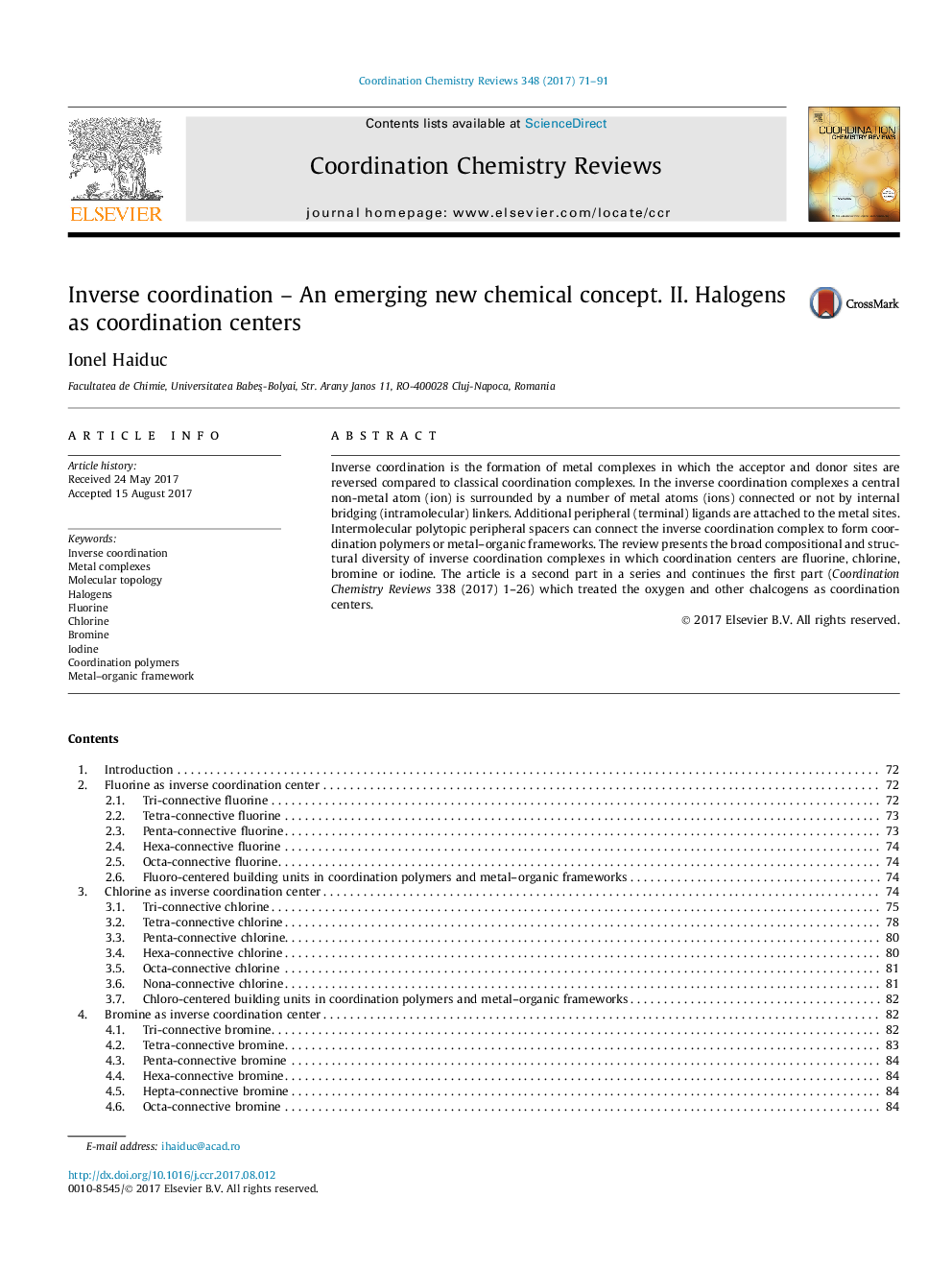| Article ID | Journal | Published Year | Pages | File Type |
|---|---|---|---|---|
| 5150739 | Coordination Chemistry Reviews | 2017 | 21 Pages |
Abstract
Inverse coordination is the formation of metal complexes in which the acceptor and donor sites are reversed compared to classical coordination complexes. In the inverse coordination complexes a central non-metal atom (ion) is surrounded by a number of metal atoms (ions) connected or not by internal bridging (intramolecular) linkers. Additional peripheral (terminal) ligands are attached to the metal sites. Intermolecular polytopic peripheral spacers can connect the inverse coordination complex to form coordination polymers or metal-organic frameworks. The review presents the broad compositional and structural diversity of inverse coordination complexes in which coordination centers are fluorine, chlorine, bromine or iodine. The article is a second part in a series and continues the first part (Coordination Chemistry Reviews 338 (2017) 1-26) which treated the oxygen and other chalcogens as coordination centers.
Keywords
Related Topics
Physical Sciences and Engineering
Chemistry
Inorganic Chemistry
Authors
Ionel Haiduc,
